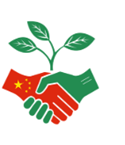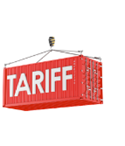TEAM Talks
 Not long ago, investors were bracing for a radical shift in US economic policy—a period of fiscal detox that stood in stark contrast to years of aggressive government spending. But Trump’s so-called “One Big Beautiful Bill”—the largest tax cut in American history—delivered a major plot twist, reigniting concerns over deficits and a ballooning national debt. It also triggered a public fallout between Trump and Elon Musk, playing out in true Jerry Springer Show fashion across social media. Trump threatened to cut federal contracts to Musk’s companies, with Tesla shares taking a hit. Musk responded by calling for Trump’s impeachment and polling X users on whether to launch a new centrist political party.
Not long ago, investors were bracing for a radical shift in US economic policy—a period of fiscal detox that stood in stark contrast to years of aggressive government spending. But Trump’s so-called “One Big Beautiful Bill”—the largest tax cut in American history—delivered a major plot twist, reigniting concerns over deficits and a ballooning national debt. It also triggered a public fallout between Trump and Elon Musk, playing out in true Jerry Springer Show fashion across social media. Trump threatened to cut federal contracts to Musk’s companies, with Tesla shares taking a hit. Musk responded by calling for Trump’s impeachment and polling X users on whether to launch a new centrist political party.
Yet beyond the drama, global equities powered ahead, with the MSCI World Index hitting record highs—driven by a strong rebound in US tech. Bonds, meanwhile, ended the week broadly flat, though not without some intra-week volatility.
 In the US, payrolls rose by 139k—above expectations but slower than the previous month. Unemployment held steady at 4.2%. On the surface, the data appears resilient, but a closer look reveals signs of weakness—such as a growing share of unemployed workers who were recently laid off, a classic early-recession signal.
In the US, payrolls rose by 139k—above expectations but slower than the previous month. Unemployment held steady at 4.2%. On the surface, the data appears resilient, but a closer look reveals signs of weakness—such as a growing share of unemployed workers who were recently laid off, a classic early-recession signal.
Impact: Markets read the report as: “the labour market may be softening, but it’s not falling off a cliff.” That hint of resilience lifted equities, while bond prices fell on expectations that the Federal Reserve is more likely to keep rates on hold.
 The energy transition relies on an unspoken deal: let China handle the dirty work. Rare earths are essential for EV motors, wind turbines, and military tech—but mining and refining them is messy business, involving toxic chemicals, radioactive waste, and heavy water use. Strict environmental rules in the West have made rare earth processing slow, expensive, and politically fraught. China, on the other hand, never worried about Western approval, spending decades subsidising and scaling the industry—today, it refines over 85% of global supply.
The energy transition relies on an unspoken deal: let China handle the dirty work. Rare earths are essential for EV motors, wind turbines, and military tech—but mining and refining them is messy business, involving toxic chemicals, radioactive waste, and heavy water use. Strict environmental rules in the West have made rare earth processing slow, expensive, and politically fraught. China, on the other hand, never worried about Western approval, spending decades subsidising and scaling the industry—today, it refines over 85% of global supply.
Impact: It’s no surprise China is using this as leverage. Exports haven’t been formally banned, but the approval process is now so complex—hundreds of pages of paperwork and just three senior officials authorised to sign off—that it acts like a de facto tariff.
 The European Central Bank (ECB) cut rates from 2.25% to 2%, marking the eighth reduction since the start of the current easing cycle. However, Christine Lagarde hinted that a pause may now be appropriate. Eurozone inflation has fallen below target—driven largely by lower energy costs and, more recently, a sharp cooldown in services inflation, which had previously been stubbornly high.
The European Central Bank (ECB) cut rates from 2.25% to 2%, marking the eighth reduction since the start of the current easing cycle. However, Christine Lagarde hinted that a pause may now be appropriate. Eurozone inflation has fallen below target—driven largely by lower energy costs and, more recently, a sharp cooldown in services inflation, which had previously been stubbornly high.
Impact: Despite the slightly hawkish tone, markets continue to price in two more rate cuts this year. Current inflation trends may continue to favour European bonds over US Treasuries.
 The relationship between tariffs and inflation might seem straightforward—but is it? From a US perspective, perhaps. There’s mounting evidence that nearly half of service companies are passing on 100% of tariffs to consumers, while manufacturers are absorbing a larger share of the costs through slimmer margins. However, tariffs may actually have a deflationary effect on China and Europe. Goods initially destined for the US are now piling up domestically, putting downward pressure on local prices.
The relationship between tariffs and inflation might seem straightforward—but is it? From a US perspective, perhaps. There’s mounting evidence that nearly half of service companies are passing on 100% of tariffs to consumers, while manufacturers are absorbing a larger share of the costs through slimmer margins. However, tariffs may actually have a deflationary effect on China and Europe. Goods initially destined for the US are now piling up domestically, putting downward pressure on local prices.
Impact: This could drive a growing divergence in monetary policy, with US interest rates staying well above those in the Eurozone. On paper, that should support the dollar—unless self-inflicted economic pain and policy instability continue to drive investors away from US assets.
